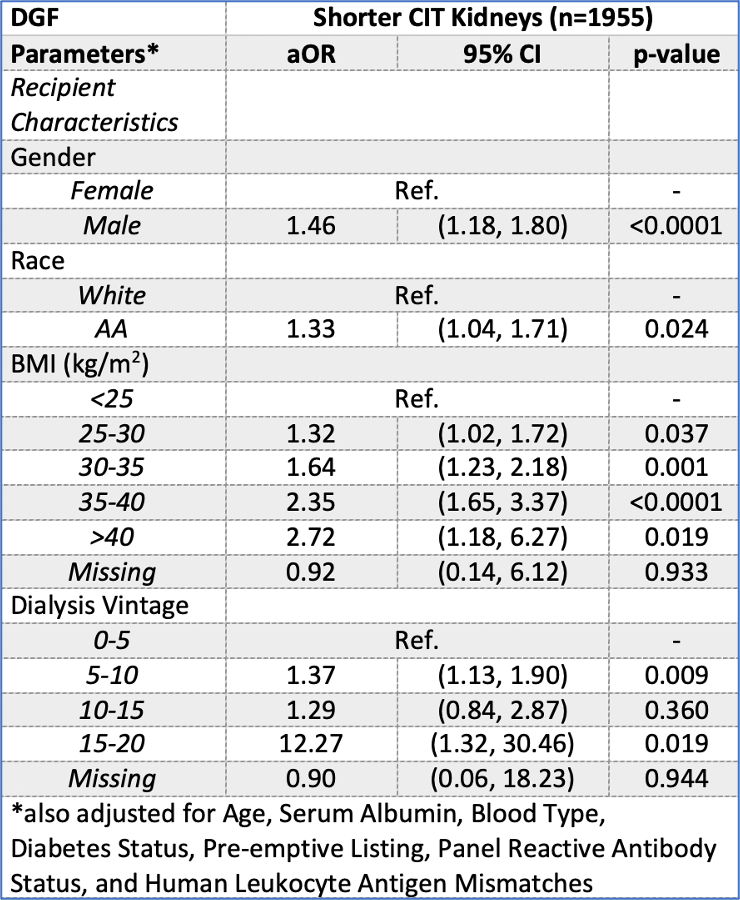Prolonged Cold Ischemic Time Demonstrating Minor Effect on Outcomes Following Renal Transplantation – A Paired Kidney Analysis
1Columbia University Irving Medical Center, New York, NY, 2Columbia University, New York, NY
Meeting: 2021 American Transplant Congress
Abstract number: 859
Keywords: Graft function, Graft survival, Risk factors
Topic: Clinical Science » Kidney » Kidney Deceased Donor Selection
Session Information
Session Name: Kidney Deceased Donor Selection
Session Type: Poster Abstract
Session Date & Time: None. Available on demand.
Location: Virtual
*Purpose: An improved understanding of the effects of cold ischemia time (CIT) on deceased donor kidney (DDK) outcomes may increase organ utilization by clarifying the detrimental impact on outcomes. We performed a paired analysis of DDKs with long CIT to measure its impact on delayed graft function (DGF) and death-censored graft survival (GS).
*Methods: Using national UNOS data, we identified 6,234 pairs (by donor) of transplanted DDKs from January 2000 to February 2020 with CIT above the US median (16 hours) and at least 5 hours apart. Among 1,955 pairs with discordant DGF status, we analyzed the impact of recipient factors and shorter versus longer CIT on DGF and 10-year GS using logistic regression and the log-rank test.
*Results: Recipients were predominantly male with a mean age of 55.4 ± 12.4 years. The kidney pairs had a median CIT difference of 10 hours between the shorter and longer CIT kidneys. The DDK with shorter CIT in the pair experienced DGF 45.3% of the time, vs 54.7% for the DDK with longer CIT. The longer CIT kidneys had an increased odds ratio for DGF compared to the shorter CIT kidneys in the pair (OR=1.44, 95% CI: 1.25-1.67, p<0.0001), but no different 10-year GS (logrank p=0.36). Kidneys that experienced DGF, however, experienced worse 10-year GS than the non-DGF group (logrank p <0.001). Among the 1,955 kidneys with shorter CIT, recipients who were male, black, had a higher body mass index (BMI), or had a longer dialysis vintage had an increased odds of DGF (Table 1).
*Conclusions: In a paired analysis of long CIT kidneys, DGF is associated with worse 10-year GS. When discordant in donor kidney pairs, DGF is likely the result of recipient factors, especially when it occurs in the kidney that experienced less CIT.
To cite this abstract in AMA style:
Sanichar N, Sandra V, King KL, Husain SA, Mohan S. Prolonged Cold Ischemic Time Demonstrating Minor Effect on Outcomes Following Renal Transplantation – A Paired Kidney Analysis [abstract]. Am J Transplant. 2021; 21 (suppl 3). https://atcmeetingabstracts.com/abstract/prolonged-cold-ischemic-time-demonstrating-minor-effect-on-outcomes-following-renal-transplantation-a-paired-kidney-analysis/. Accessed December 24, 2025.« Back to 2021 American Transplant Congress

